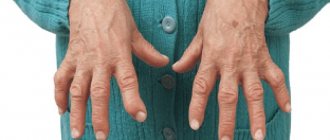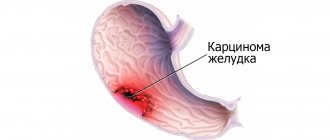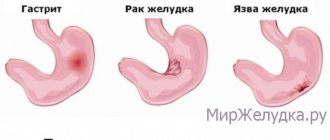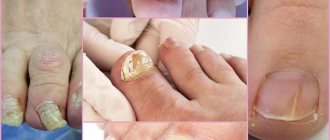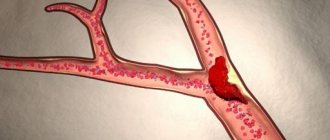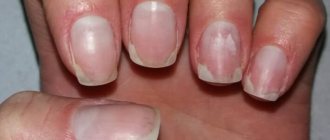Chemical burns are understood as such a violation of the integrity of human tissues, in which the main cause of its occurrence was chemically active substances or liquids, alkalis, acids, salts of heavy metals.
Chemical burns often occur in everyday life and at work if the handling rules or safety precautions prescribed for these substances are not followed.
The severity of the lesion is always determined by its depth, the time of exposure to the damaging factor, as well as its concentration. The most severe are chemical burns of the third and fourth degrees, which most often occur in work situations where an employee deals with hazardous substances.
Features of thermal burn
Burns are classified according to severity and etiology of injury. There are these types of burns:
- thermal (cause of damage to skin and tissue - high temperature of flame, steam, water, hot object);
- chemical (occurs when exposed to chemicals: acids, alkalis, various solutions);
- electrical (the source of damage is an electrical discharge);
- radiation (negative effect on the condition and integrity of the skin of radiation of various natures. These can be solar, ultraviolet, ionizing rays).
Thermal burns can occur at work, at home, on the street and anywhere else. The cause is non-compliance with safety rules, domestic injuries, car and plane accidents, fires, explosions and others. In addition to external damage, there are thermal damage to the mucous membrane of the oral cavity, larynx, esophagus and stomach. Such cases are associated with ingestion of hot food or drinks.
Based on the extent of the wound surface, the depth of the lesion and the general condition of the victim, burns are classified into stages:
- In stage I, there is no wound or blisters at the burn site. There is redness and burning. With this degree of damage, the victim does not require hospitalization. The damaged surface heals within 3-4 days without complications.
- In degree II, blisters appear, tissue hyperemia, necrosis of the epidermal layer, and pain are observed. With proper first aid, the burn site heals in 10-12 days. If the victim is a child or the wound surface of an adult occupies a large area, you should call an ambulance or go to a burn center.
- In grade III, necrosis of the upper layer of skin and dermis is observed. A brown or grayish scab appears on the damaged area. Beneath it, bright pink areas of the dermis are visualized. Bubbles with serous fluid inside appear. Often, suppuration occurs at the site of burst blisters. The healing process largely depends on pre-medical treatment of the wound. In the absence of complications, regeneration occurs within 30-40 days.
If the burn causes necrosis of the skin and subcutaneous tissue, then a dark dry scab from the flame or a soft viscous gray scab from steam and boiling water forms at the wound site. The removal of a scab is often accompanied by an inflammatory process with suppuration of the wound. Healing is slow and completes 4-5 weeks after the incident. A mark in the form of a stain and a scar remains at the burn site.
- Stage IV is the most severe. It is characterized by charring and death of tissues, muscles, tendons, and bones. The process of rejection of dead tissue is slow and painful, often with complications. Such severe injuries can cause amputation of the phalanges of the fingers, hands, and limbs.
Stages 1-2 are superficial and injuries heal on their own with the help of medications. Treatment of stages 3 and 4 requires the participation of doctors, often surgical intervention.
Symptoms
Obvious signs of a 2nd degree burn are manifested in deformation of the skin - the rapid formation of blisters. The upper layer of the epidermis peels off, creating a cavity with a yellowish liquid.
Sometimes it is one large bubble over the entire affected area, surrounded by reddened areas of the skin. This education creates many restrictions in the usual lifestyle and physical activity. After a few days, the contents become cloudy, the blister breaks naturally, revealing a wet wound.
Other symptoms include:
- acute pain;
- swelling;
- redness of the skin;
- temperature increase;
- deterioration of general health.
A 1st or 2nd degree burn should not be considered a minor injury. Seeing a doctor is necessary if the following factors occur:
- damage to more than 5% of the skin, more than 2% in children - 1% is conventionally taken to be the size of the victim’s palm;
- localization - face, esophagus, perineum, respiratory tract, joints;
- the appearance of foci of suppuration;
- increased pain, swelling;
- chemical damage.
A 2nd degree thermal burn is less dangerous than damage from caustic substances, so visiting a doctor (surgeon) is a prerequisite for proper therapy. Particular attention should be paid to skin damage in the area of the nose, eyes, ears, where important organs and many nerve endings are concentrated.
A 2nd degree facial burn is associated with the risk of cosmetic defects, so it is not recommended to neglect the help of specialists.
First aid at home
By adhering to a certain sequence in providing first aid, you can alleviate the victim’s condition and reduce the risk of the burn spreading, inflammation and suppuration.
First aid algorithm for thermal burns:
- eliminate the source of injury;
- free the wound area from clothing. It is unacceptable to tear off the adhered tissue from the wound. It needs to be trimmed off the free areas, and the rest left in the wound;
- cool the burn site under running water, or immerse the part of the body with the wound surface in water. For grades 3 and 4, you should first apply an aseptic bandage and then immerse the damaged area in a container with cool water for 20 minutes;
- treat the burn with a solution of Chlorhexidine, lubricate it with medicinal regenerating liniment, give an anesthetic;
- apply a bandage to the wound to prevent it from becoming infected;
- with extensive burns, shock may occur, which will be manifested by a decrease in blood pressure, pallor, anxiety, breathing problems, tachycardia and other signs. In this case, it is necessary to provide the patient with plenty of fluids and wait for the ambulance to arrive.
We recommend reading:
What is a thermal burn? Contraindications for home treatment of thermal burns.
Premedical actions for different degrees of burns
Providing first aid for thermal burns of varying degrees:
| Severity of damage | Features of emergency care |
| Stage 1 | A first degree burn does not require a bandage. It is enough to apply a medicinal ointment or spray. |
| Stage 2 | The damaged area is cooled, treated with regenerating ointment and a sterile bandage is applied. If blisters appear, then large ones must be cut at the base and the exudate released, but not tear off the exfoliated skin. If you complain of pain, you should give an anesthetic. |
| Stage 3 | Cooling of the wound must be done after removing clothing and applying a damp bandage. Do not remove skin from burst blisters. The wound is treated with a solution of chlorhexidine, furatsilin or boric acid. To relieve pain, the area is sprayed with 0.5% novocaine for 5-7 minutes. Then apply a bandage with Syntomycin, Methyluracil ointment, Panthenol, Levomekol, Betadine, Povidone-iodine. The patient must be given plenty to drink to avoid dehydration. Calling an ambulance or independently delivering the victim to a medical facility is mandatory. |
| Stage 4 | Helping someone severely injured by a burn involves relieving their condition and providing them with plenty of fluids until the ambulance arrives. After treatment, the cooled wound surface is covered with a sterile bandage. The patient is given painkillers or given injections with narcotic analgesics. Treatment is carried out in a specialized medical burn center. |
Causes and characteristics of injury
Burn injuries to the skin most often occur in everyday life in unforeseen situations, from careless handling of hot liquids, fire, or caustic substances. A second degree burn occurs due to various damaging factors.
Damage is identified:
- thermal - damage to the skin by flame, steam, boiling water, or a hot object;
- chemical - exposure of the skin to acidic and alkaline solutions;
- electrical - the formation of injury due to an electric charge;
- radiation - damage by ultraviolet, ionizing radiation.
Under the influence of a damaging factor, the epidermis, dermis, stratum corneum are destroyed, capillary permeability is damaged, and, less often, nerve endings. The deep layers of the skin are preserved, allowing active tissue regeneration without scar formation. The condition under which rapid healing of 2nd degree burns occurs is correct and timely treatment, the use of modern effective drugs.
Follow-up medical treatment
Inpatient treatment is not indicated for victims who have 1st degree burns. Mild damage to the skin can be treated at home using regenerating drugs.
In grade 2, the patient is hospitalized if the burn covers a large area. The doctor must prescribe analgesics, antibiotics, and local agents with anti-inflammatory and healing properties. An ointment bandage is applied to the wound, which is changed regularly 2-3 times a week. Plastic surgery may be necessary if the burn site is the face or other open areas, and also if the treatment was complicated, resulting in scarring.
Third and fourth degree burns are characterized by deep damage and necrosis of the skin and tissues. The healing process of such wounds is divided into several stages, each of which requires a special approach to treatment:
- The purulent-necrotic stage of healing occurs with pronounced hyperemia of the wound surface, tissue swelling, and suppuration. Therapy is aimed at preventing the spread of infection;
- granulation is characterized by cleansing the wound of dead tissue and purulent masses, and a decrease in edema. Treatment is aimed at removing discharge from the wound. For this purpose, hygroscopic dressings are used;
- epithelialization is the restoration of skin or the formation of scar tissue. It is important to follow a gentle regime for the wound in order to promote its complete healing.
Surgical therapy for burns is divided into three types:
- necrotomy (performed for severe forms of burn wounds to prevent subfascial edema);
- necrectomy (separation of scabs to clean the wound from tissues affected by necrosis and/or amputation of a limb);
- dermatoplasty (used for 2-3 degree burns to eliminate a cosmetic defect).
Degrees and types
The classification of thermal burns by type of damage is as follows:
| From the fire | It is a fairly large, but relatively shallow (second degree) burn area. Remains of burnt clothing can only be removed by a doctor, as there is a risk of causing even more damage to the skin. Threads and fabric can cause infection in the wound. |
| From steam | There is a risk of burns to the upper respiratory tract. The damage is shallow. |
| From hot objects | The burn area is the outline of an object; boundaries are visible, which quickly darken. The depth is large (grade 2-4). There is a high probability that a scar that is difficult to remove will remain at the burn site. |
| From hot liquid | The lesion is relatively small, but deep (grade 2-3). |
Possible complications
Correct provision of first aid in compliance with the order of the necessary actions is of great importance for the further course of the healing process. To prevent wound infection, it is necessary to carefully follow the rules of asepsis and medical recommendations.
Traditional medicine does not encourage the use of traditional methods of therapy, since an illiterate approach to the implementation of pre-medical care can lead to negative consequences. Especially when it comes to deep wounds and burns of the respiratory tract, visual organs, and digestive organs.
The article has been verified by the editors
